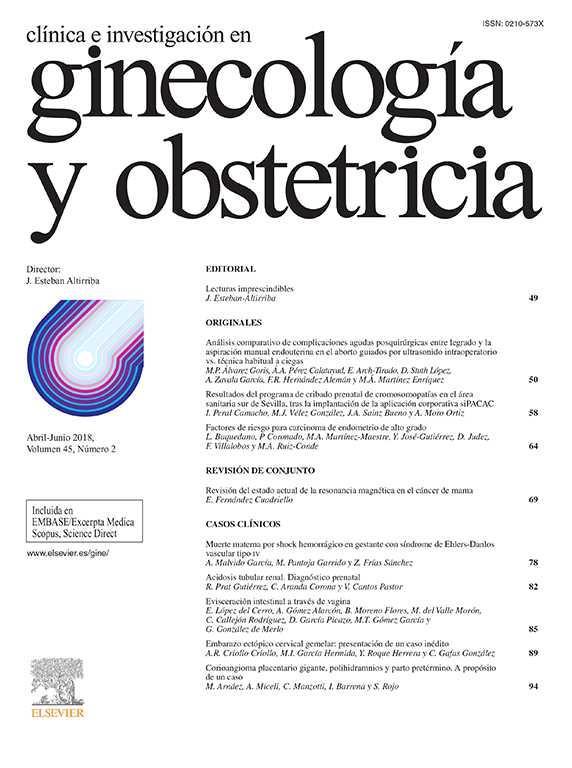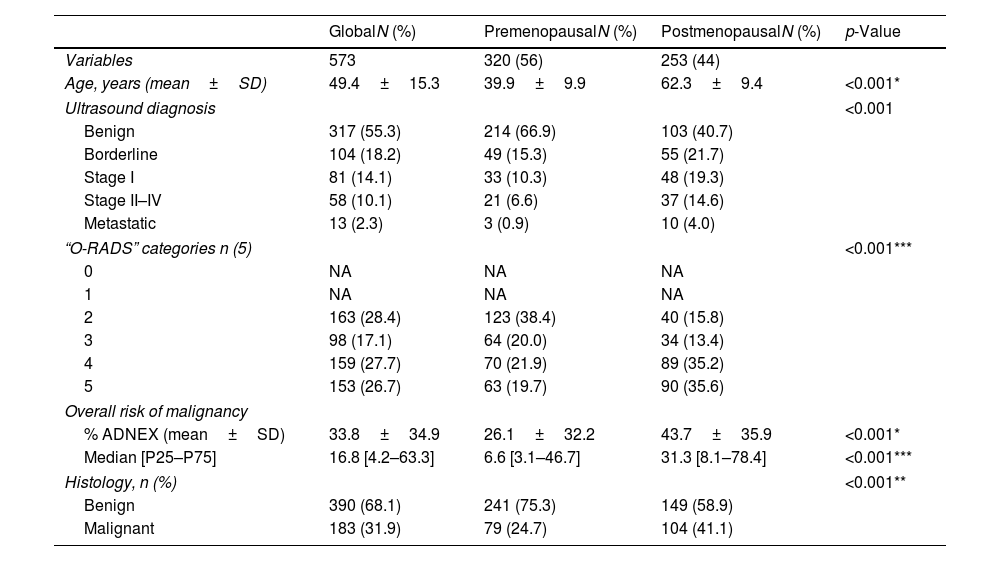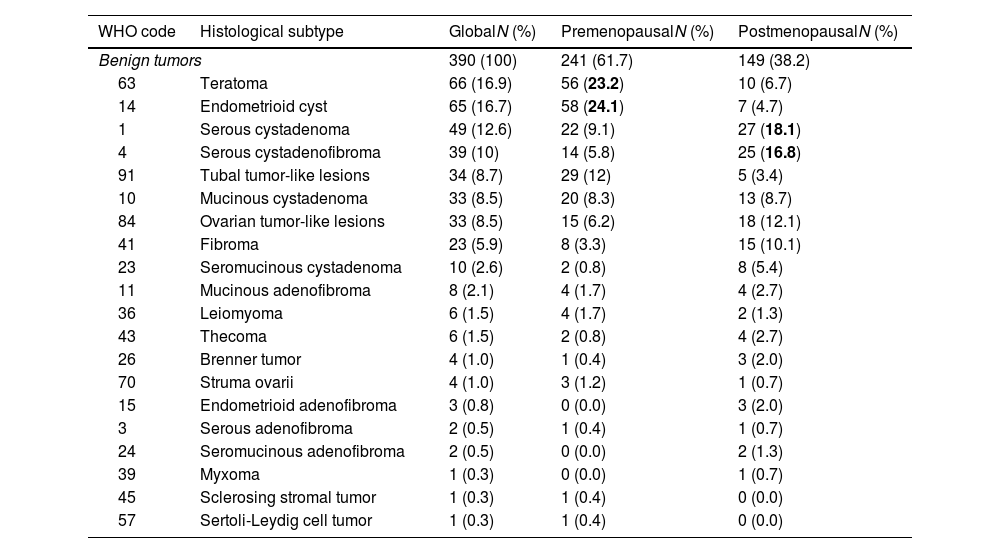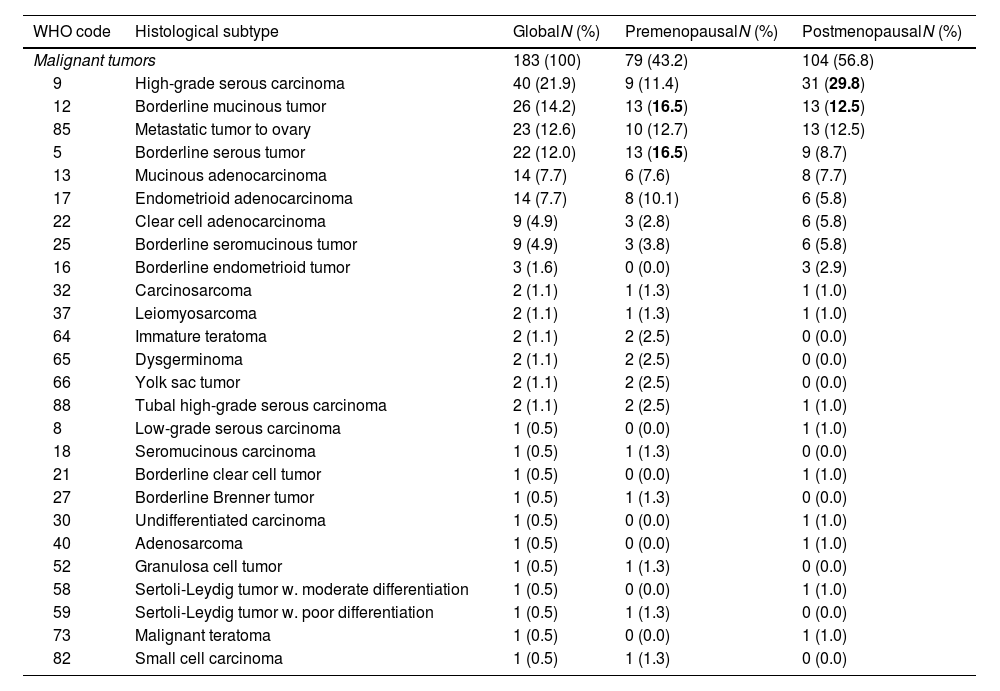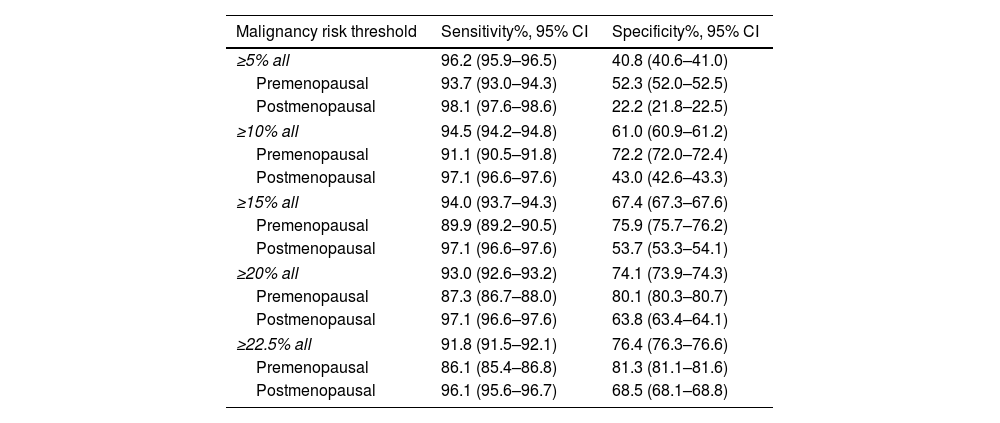The objectives were to estimate the performance of the IOTA-ADNEX model test after its incorporation into the ultrasound tests of our third-grade hospital gynecology service, as well as to assess whether its capacity of accuracy is modified when taking into account the patient's menopausal status.
MethodsA cross-sectional study was conducted to clinically evaluate the diagnostic performance of the IOTA-ADNEX model test, which was performed between January 2016 and December 2021. The study included 573 women with an adnexal injury who underwent surgical excision within 180 days after ultrasound diagnosis and histological confirmation (gold standard). After the ultrasound exam, the injuries were classified using the ADNEX model. The study estimated the area under the receiver-operating-characteristics curve (AUC) of the ADNEX model for classifying between benign and malignant adnexal masses and compared the performance by menopausal state. Sensitivity and specificity were determined for different cut-off points.
ResultsOut of the 573 women, 183 (31.9%) had a malignant tumor. The AUC of the ADNEX model for differentiating between benign and malignant adnexal masses at the time of ultrasound examination was 0.92 and the best malignancy threshold, detected by Youden index, was 22.5%. At this cut-off, the sensitivity of the ADNEX model was 91.8% and the specificity was 76.4%. However, it varies according to menopausal status: in the group of pre-menopausal patient, sensitivity was 86.1% (95% CI, 85.4%–86.8%) and specificity was 81.3% (95% CI, 85.4%–86.8%). In the postmenopausal group, sensitivity was 96.1% (95% CI, 95.6%–96.7%) and specificity was 68.5% (95% CI, 68.1%–68.8%).
ConclusionsThe IOTA-ADNEX model is a reliable diagnostic tool to discard ovarian cancer. However, the accuracy of the test, at the same cut-off point, varies according to the menopausal state of the patient so it may be important to take it into account when taking decisions in clinical practice.
Los objetivos eran estimar el rendimiento del test IOTA ADNEX model después de su incorporación en el estudio ecográfico en nuestro servicio de ginecología, en un hospital de tercer nivel, así como evaluar si su capacidad de precisión se modifica al tener en cuenta el estado menopáusico de la paciente.
MétodoSe llevó a cabo un estudio transversal para evaluar clínicamente el rendimiento diagnóstico del test IOTA ADNEX model, el cual se realizó entre enero de 2016 y diciembre de 2021. El estudio incluyó a 573 mujeres con una lesión anexial que se sometieron a tratamiento quirúrgico en un plazo de 180 días después del diagnóstico por ecografía y confirmación histológica (gold standard). Después de realizar la ecografía, las lesiones fueron clasificadas utilizando el modelo ADNEX. El estudio estimó el área bajo la curva (AUC) del modelo ADNEX para diferenciar entre masas anexiales benignas y malignas, y se comparó el rendimiento según el estado menopáusico. Se determinó la sensibilidad y la especificidad para diferentes puntos de corte.
ResultadosDe las 573 mujeres, 183 (31,9%) tenían un tumor maligno. El AUC del modelo ADNEX para diferenciar entre masas anexiales benignas y malignas en el momento del examen ecográfico fue de 0,92 y el umbral de malignidad óptimo, detectado por el índice de Youden, fue del 22,5%. Con este punto de corte, la sensibilidad (SE) del modelo ADNEX fue del 91,8% y la especificidad (SP) fue del 76,4%. Sin embargo, esto varía según el estado menopáusico: en el grupo de pacientes premenopáusicas, la sensibilidad fue del 86,1% (IC del 95%: 85,4-86,8%) y la especificidad fue del 813% (IC del 95%: 85,4-86,8%). En el grupo de pacientes posmenopáusicas, la sensibilidad fue del 96,1% (IC del 95%: 95,6-96,7%) y la especificidad fue del 68,5% (IC del 95%: 68,1-68,8%).
ConclusionesEl IOTA ADNEX model es una herramienta de diagnóstico confiable para descartar el cáncer de ovario. Sin embargo, la precisión del test, utilizando el mismo punto de corte, varía según el estado menopáusico de la paciente, por lo que puede ser importante tenerlo en cuenta al tomar decisiones en la práctica clínica.




